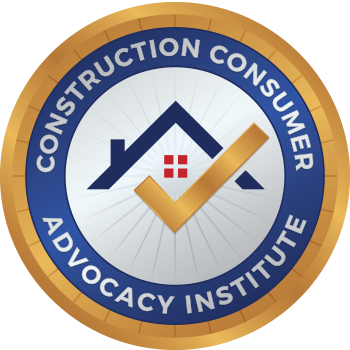When we think about pollution, our minds often wander to busy highways, smoky factories, or crowded urban centers. But did you know the air inside your home could be more polluted than the air outside? For most of us—especially parents, homeowners, and those who prioritize their health—understanding the risks of poor indoor air quality is crucial.
This blog will guide you through how bad indoor air quality impacts your health and what you can do to improve it.
Share with us your Contractor Con Horror story.
For Tons of Great Free Information please hit “Like & Subscribe”
Websiteconstructionconsumeradvocacyinstitute.com
www.youtube.com/@ConstructionConsumerAdvocacy
Why Indoor Air Quality Matters 
Did you know that the average person spends about 90% of their time indoors? Whether you’re at home with your family, on your computer working, or simply relaxing, the air you breathe inside can have a significant effect on your well-being. Yet, indoor air pollution is often an overlooked health hazard.
Sources of indoor pollution might surprise you:
- Dust and Pet Dander – Both can trigger allergies, asthma, and respiratory irritation.
- Household Chemicals and Cleaning Products – These often emit volatile organic compounds (VOCs), which can negatively impact your lungs over time.
- Mold and Mildew – Moisture can lead to the growth of harmful mold that releases particles into the air.
- Cooking and Heating Appliances – Stoves, fireplaces, candles, and even some air fresheners release potentially harmful particles or gases.
- Outdoor Pollution Coming Indoors – Toxins like pollen or vehicle exhaust can seep through windows and doors, especially if ventilation is poor.
Bad indoor air quality doesn’t just stop at discomfort; its effects can lead to serious health concerns.
Health Concerns Linked to Poor Indoor Air Quality
Whether you’re a parent worried about your child’s well-being, a homeowner creating a sanctuary, or someone focused on maintaining a balanced life, these health effects are worth noting. Here are the major ways poor air quality can harm you:
1. Respiratory Problems
Breathing contaminated air can irritate your airways and lungs. Some people develop symptoms similar to allergies or colds, including sneezing, coughing, shortness of breath, or wheezing. For individuals with asthma, bad indoor air can trigger potentially dangerous attacks.
2. Chronic Illness
Long-term exposure to poor indoor air has been linked to a range of chronic issues, including reduced lung function and cardiovascular diseases. Constant exposure to VOCs or fine particulate matter increases your risk over time.
3. Fatigue and Poor Concentration
Poor air quality doesn’t just affect your body—it impacts your brain, too. Prolonged exposure can make you feel tired, sluggish, or irritable. Difficulty concentrating or brain fog may result from exposure to contaminants such as carbon dioxide or high VOC levels in enclosed spaces.
4. Allergies and Skin Reactions
Bad indoor air quality often means higher levels of dust, pollen, and microbial allergens like mold. These can lead to runny noses, itchy eyes, or even skin irritations and rashes.
5. Impact on Vulnerable Populations
Certain groups are at higher risk, such as:
- Children – Their developing lungs and immune systems make them more sensitive.
- Elderly Adults – Pre-existing conditions like COPD worsen with poor air quality.
- Individuals with Pre-existing Conditions – Those with asthma, allergies, or heart problems will notice an immediate impact.
Understanding how air quality affects your home is the first step toward protecting your family and health.
How to Improve Your Indoor Air Quality
The good news? There are plenty of steps you can take to enhance the air you and your loved ones breathe every day. Here’s where to start:
1. Improve Ventilation
Open windows regularly to bring in fresh air and prevent a buildup of indoor pollutants. If possible, use exhaust fans in your kitchen and bathrooms to reduce humidity and circulate air.
2. Use Air Purifiers
Investing in a high-quality air purifier with HEPA filters helps eliminate fine particles like dust, dander, and pollen. Look for options that also address odors and VOCs.
3. Maintain Indoor Plants with Care
Houseplants can help purify the air in small measures. However, overwatering them can promote mold—so maintain them carefully.
4. Regular Cleaning
Vacuuming, dusting, and deep-cleaning carpets and furniture can reduce dust, allergens, and other particulates present in your home.
5. Monitor Humidity Levels
Keep your indoor humidity between 30%–50% to reduce mold growth and dust mites. Dehumidifiers can be helpful in damp or humid climates.
6. Avoid Smoking Indoors 
Tobacco smoke is one of the worst indoor air pollutants. Keeping it out of the house altogether will lead to cleaner air.
7. Be Mindful of Chemical Use
Opt for non-toxic cleaning products and avoid using aerosol sprays. Whenever you paint or use strong adhesives, ensure the space is well-ventilated.
8. Check and Maintain Appliances
Ensure that cooking, heating, and cooling appliances are functioning well and serviced regularly. Poorly maintained equipment can emit carbon monoxide and other harmful gases.
Final Thoughts
The air you breathe at home should never be compromising your health, particularly when it’s a place you seek comfort and safety. Simple changes to your cleaning habits, ventilation, and maintenance practices can go a long way toward improving your indoor air quality.
Don’t overlook the invisible—protect yourself and your family today by creating a healthier, cleaner indoor environment. Start small, and you’ll breathe easier in more ways than one.
Want more tips about home health hacks? Subscribe to our newsletter for monthly articles from our home health experts!



